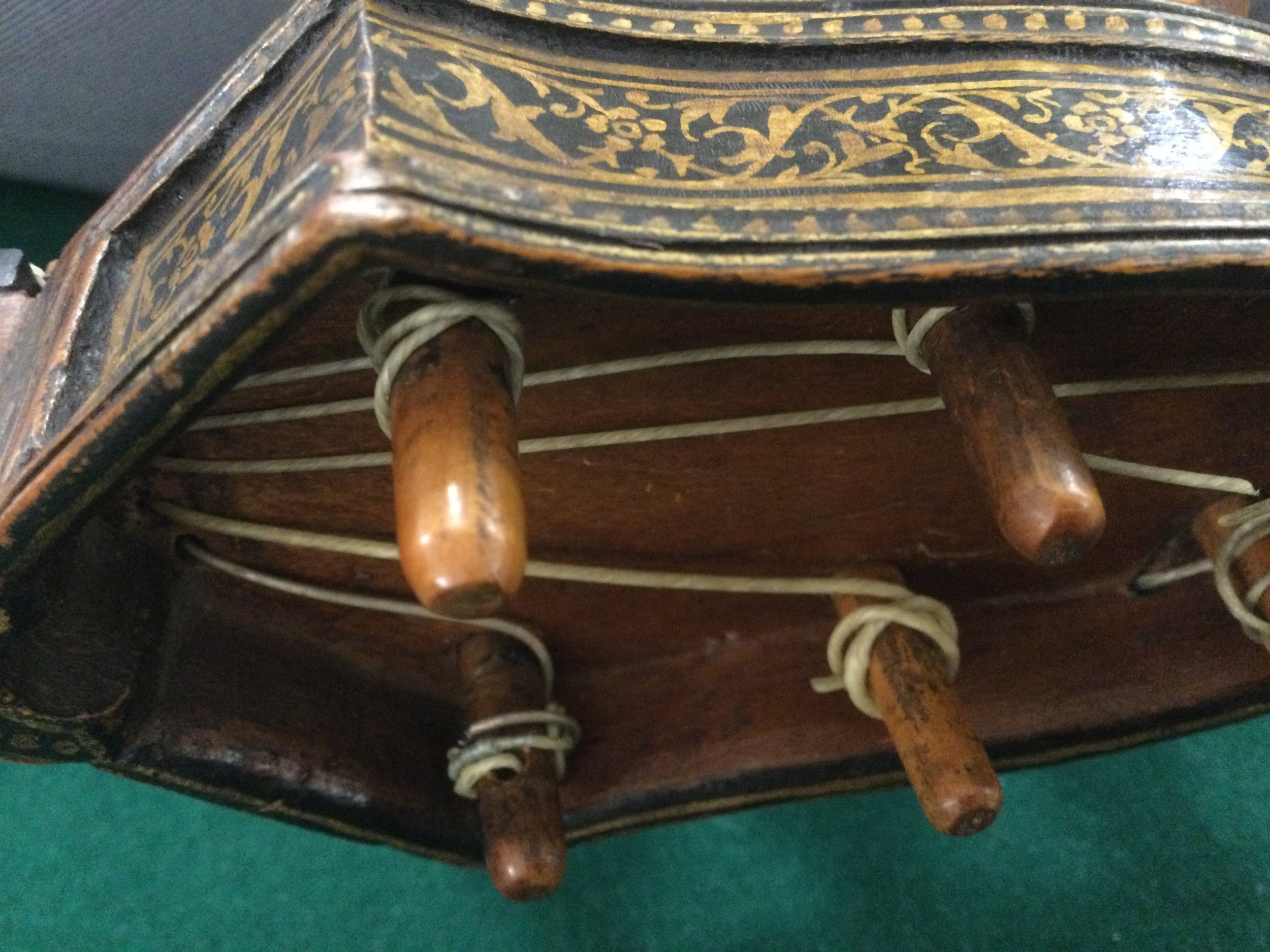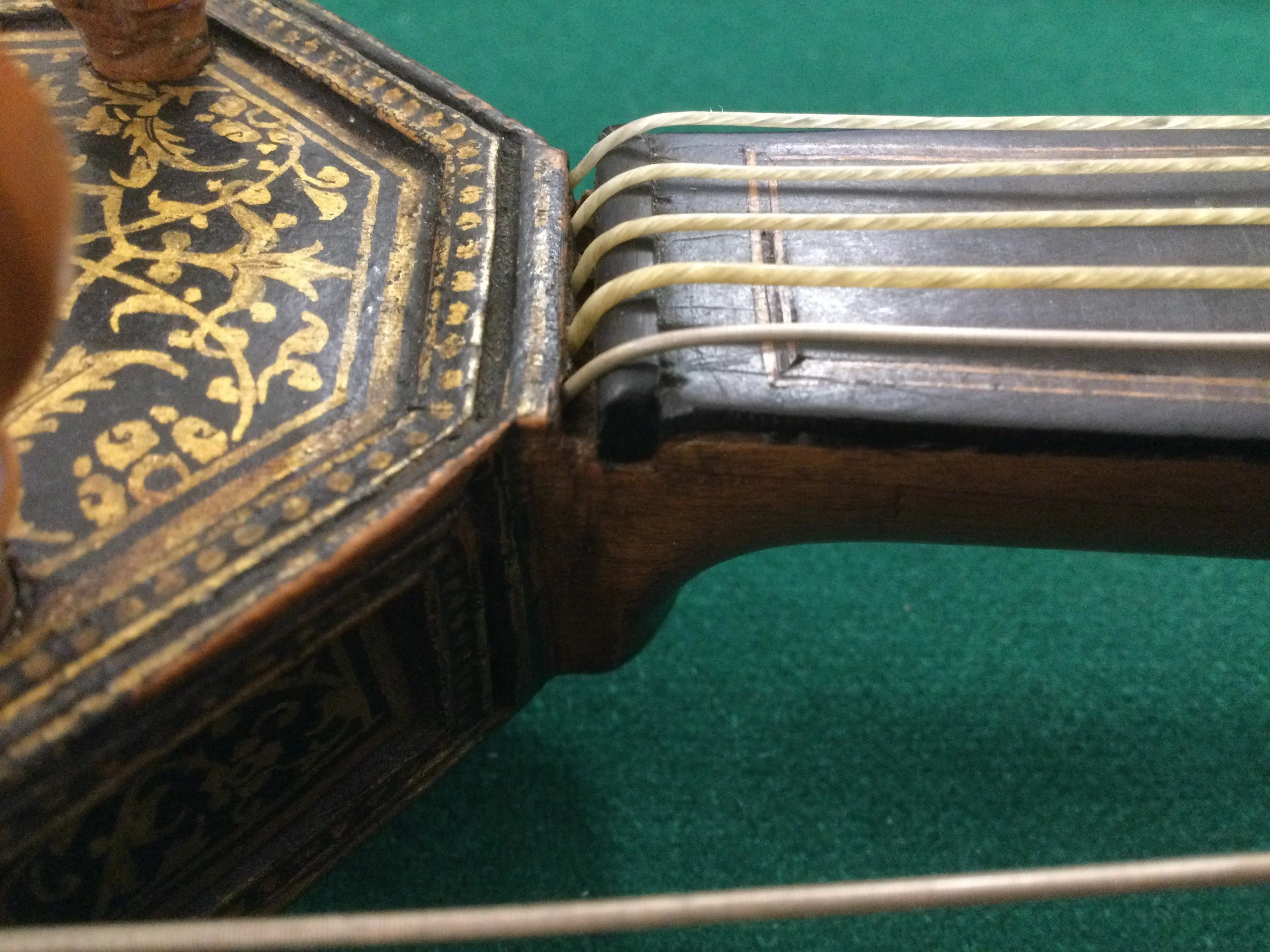The ribs are left very thick at 1.8mm, giving a bigger gluing surface because there are no linings inside. There are small corner blocks in each corner.
Interestingly, the grain of the Spruce top block runs horizontally rather than vertically. This feature is also true of the small treble Viol also by Giovanni Maria, suggesting that it was done intentionally.
There is also no bass bar inside this Lira da braccio, and there doesn’t seem to be any sign of one ever being inside. It is possible that the Lira da braccio had a soundpost only, without a bass bar, either centrally or under one bridge foot. The front has been left thick to accomodate for this, at around 4.5mm thick in some areas.
















